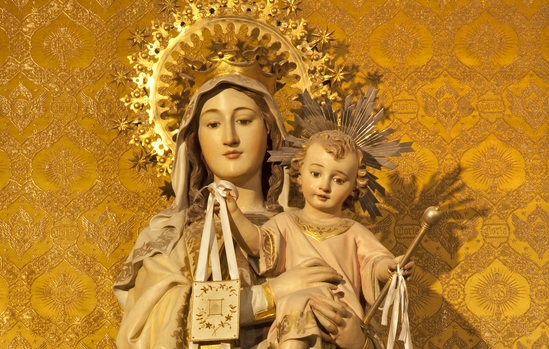+JMJ+
Dear friends,
This coming Wednesday, July 25th (the Feast of St James), will mark the 50th Anniversary of Pope Paul VI's encyclical Humanae vitae, which again confirmed the Church's perennial teaching concerning the vocation of marriage, including that sexual relations are ordered toward procreation, and so contraception is contrary to God's will and objectively sinful. Again, this is the Church's perennial teaching; it was not new or even a development of previous teaching when Humanae vitae was published. (Interestingly for us Catholics of Anglican background, that teaching had last received magisterial reaffirmation in Pope Pius XI's 1930 encyclical Casti connubii, issued in response to the 1930 Lambeth Conference of Anglican bishops, which had abandoned that perennial teaching with cascading consequences we know only too well.)
The prohibition of contraception marks the Church, like her Head whose Body she is, as a "sign of contradiction" in the modern world. Sexual pleasure and "freedom" is seen by most in our time as a - or even the - fundamental good to which all humans are entitled, to be had at one's whim and without any natural consequences, be emotional, relational, or biological (i.e., babies). But even among married Catholic couples striving to be faithful, and many others of good will as well, for whom sex is a unitive good and "mutual joy" within marriage, this teaching has proven difficult to receive and live out.
But its difficulty can be in no way a strike against its truth - indeed, why would we expect it to be? What is good in this fallen world is often difficult, and we would expect a good which sits so close to the center of our humanity - the love between husband and wife, the begetting and raising of children - to be obtained only with difficulty and, ultimately, when carried along by God's grace. But conformity with the truth is the only true freedom and always worth striving after. And the dire consequences, for individuals and our society, and especially for women and children, of living against the grain of God's truth are increasingly plain for all to see (cf. the articles by Mary Eberstadt linked below).
I often hear it said that, because they are unmarried, Catholic priests have no credibility when it comes to counseling married couple in this area. Well, that has always seemed silly to me. Chastity is chastity, and it seems obvious that those who are perpetually celibate might indeed have something to say to those who, for the sake of spacing children and cooperating with nature, might be only intermittently and briefly celibate. But, for what it's worth, I am a married Catholic priest, and happy to offer whatever counsel I may to Catholic couples who desire to order their sexual lives in accord with God's will, including of course the Sacrament of Reconciliation. I believe this difficult teaching of the Church is true and that it is a way to happiness and wholeness.
In the meantime, here are a couple resources to help those who want to understand the Church's teaching in this matter:
- A Catholic married couple talks about how Pope Paul VI's encyclical on married love, Humanae Vitae, has enriched their lives. (Video)
- "What They Didn't Tell Me in Sex Ed: How Natural Family Planning taught me that the body is not a problem", Leah Libresco Seargent.
- "The Vindication of Humanae Vitae," Mary Eberstadt.
- "The Prophetic Power of Humanae Vitae," Mary Eberstadt.
- Taking Charge of Your Fertility, Toni Weschler.
- The Sinner's Guide to Natural Family Planning, Simcha Fischer.
- "Ask the Question," a Twitter conversation and symposium from the Diocese of Arlington.
Again, I'm happy to talk (confidentially!) with any of you who wish to pursue this further, and to offer whatever pastoral and sacramental support I may as we all seek to live in to the beautiful truth of God's design for our bodies, for our families, for the Church.
God bless you,
Fr Allen








